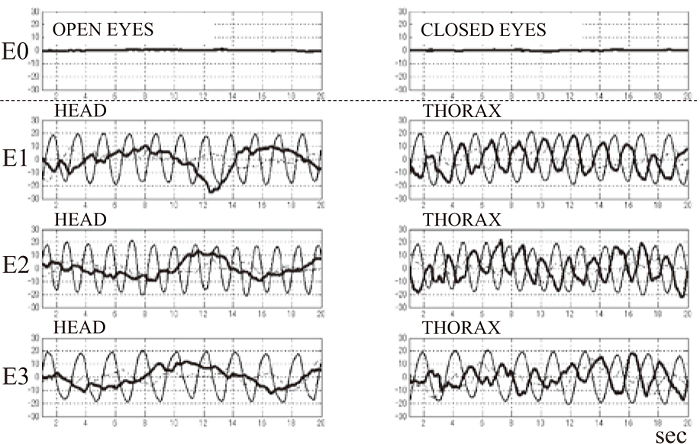
Fig. 2
Examples of the head position and the center of foot pressure at a comfortable pace for one subject, thick traces represented medio-lateral signals, and broken traces did antro-posterior signals of the center of foot pressure. Rhythmical oscillated traces represented the head motion. The abscissas represented time course in sec. A column M1 was for the movements with only the head, M2 for that with the head and thorax synchronized. A row E1 was for the movements in gazing at the laser projected point, E2 for that in gazing at the fixation point, E3 for that with eyes closed, respectively.